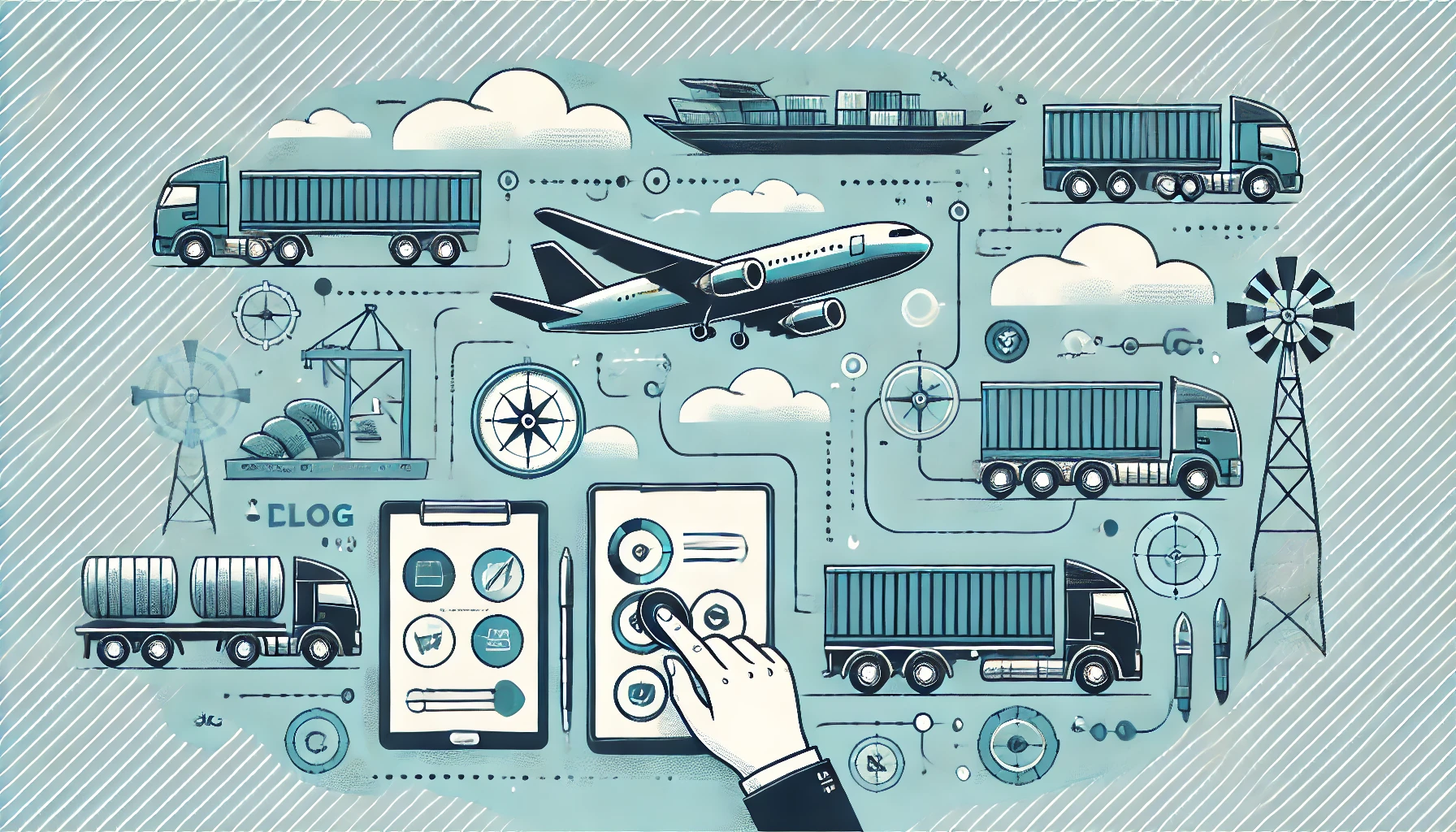When it comes to shipping goods, one of the most important decisions a business or individual can make is choosing the right freight mode. The choice of the appropriate freight mode impacts the efficiency, cost, and overall success of your supply chain. With a wide variety of transport options available, selecting the best mode of transport can be complex, but understanding key factors such as cost, speed, volume, and the nature of the goods can help simplify the process.
In this article, we will explore how to choose the best freight mode for your goods. Whether you are a seasoned logistics expert or a newcomer to shipping, this guide will provide the knowledge you need to make an informed decision.

Understanding Freight Modes
Before diving into the selection process, it's important to understand the basic types of freight modes available. These include air freight, sea freight, road freight, and rail freight. Each of these modes has its own advantages and disadvantages, depending on various factors like distance, delivery time, and the type of goods being transported.
Air Freight
Air freight is the fastest mode of transportation, making it ideal for goods that need to reach their destination quickly. This is especially useful for high-value or perishable goods like electronics, pharmaceuticals, and fresh produce.
Advantages of air freight:
Fastest mode of transport.
High reliability and minimal delays.
Ideal for urgent shipments or high-value goods.
Disadvantages of air freight:
Typically the most expensive option.
Limited capacity for large or heavy shipments.
Heavily impacted by weather conditions.
Sea Freight
Sea freight is the most commonly used mode of transportation for long-distance shipping, particularly for bulk goods. This method is ideal for businesses that need to transport large quantities of goods at a lower cost.
Advantages of sea freight:
Cost-effective for large and heavy shipments.
Suitable for transporting large quantities of goods.
Less affected by weather compared to air freight.
Disadvantages of sea freight:
Slower compared to air freight.
Can be affected by port congestion and other logistical delays.
Limited to coastal or port-accessible locations.
Road Freight
Road freight is the most flexible mode of transport, as it provides door-to-door service. It is ideal for transporting goods over short to medium distances and is often used for domestic deliveries or as part of a multi-modal transport strategy.
Advantages of road freight:
Flexible and customisable routes.
Suitable for both small and large shipments.
Easy integration with other transport modes, such as air and sea freight.
Disadvantages of road freight:
Subject to traffic and weather delays.
Can be more expensive than rail freight for long distances.
Less environmentally friendly compared to other modes.
Rail Freight
Rail freight is often used for long-distance transport of bulk goods, such as coal, agricultural products, and heavy machinery. It is generally more cost-effective than air or road freight for large shipments over land.
Advantages of rail freight:
Ideal for large and heavy shipments.
Cost-effective for long-distance transport.
Environmentally friendly compared to road freight.
Disadvantages of rail freight:
Limited to areas with rail infrastructure.
Slower than road freight for shorter distances.
Requires additional transport to and from rail terminals.
Factors to Consider When Choosing the Best Freight Mode
When deciding on the best mode of transport for your goods, there are several key factors to consider. Understanding these factors will help you weigh the pros and cons of each option and make the best choice for your business.
1. Type of Goods
The nature of the goods you're shipping plays a significant role in determining the best freight mode. Some goods, such as perishable items, require fast delivery, making air freight the best option. On the other hand, heavy, non-perishable goods might be better suited for sea or rail freight.
Perishable Goods
Perishable goods like fresh produce, flowers, or seafood need to be transported quickly to maintain their quality. Air freight is typically the best choice for such shipments due to its speed and efficiency. However, it can be expensive, so businesses must carefully weigh the cost versus the need for speed.
Bulky and Heavy Goods
For heavy and bulky items such as machinery, construction materials, or vehicles, sea freight and rail freight are generally the best options. These modes are more cost-effective for large quantities or oversised shipments. However, it’s important to consider the logistics of loading and unloading these goods at ports or rail terminals.
High-Value Goods
High-value goods like electronics, jewelry, or fine art need special care and security during transit. Air freight provides a quick, secure option for these types of goods. Although it is more expensive, the speed and security offered by air freight can justify the cost for businesses dealing with high-value items.
2. Shipping Time
Shipping time is another critical factor in deciding which freight mode to use. If your goods are on a tight deadline, air freight may be your best option due to its speed. For longer timelines, sea freight or rail freight can be more cost-effective, albeit slower.
Time-Sensitive Shipments
For businesses that need goods delivered quickly, air freight is often the best choice. Air freight typically offers the fastest delivery times, making it ideal for time-sensitive goods. However, this speed comes at a premium, so businesses must balance speed with budget constraints.
Non-Urgent Shipments
If you are not in a rush, sea freight and rail freight can provide more affordable options without the need for expedited delivery. Sea freight typically takes longer, but it is an excellent choice for businesses that can afford to wait. Rail freight offers a good balance of speed and cost for longer distances on land.
3. Cost Considerations
The cost of shipping is one of the most important factors when selecting a freight mode. While air freight may be the fastest option, it can be prohibitively expensive for many businesses. Sea freight and rail freight offer more cost-effective solutions, especially for large or bulky shipments.
Budget Constraints
If your budget is limited, sea freight and rail freight are typically more economical than air freight. These modes offer lower shipping costs, particularly for bulk or oversised shipments. However, businesses must factor in additional costs such as terminal handling fees, fuel surcharges, and port charges when using these modes.
Volume of Goods
The more goods you need to ship, the more you can take advantage of sea freight and rail freight's bulk shipping discounts. For businesses with large shipments, these modes can significantly reduce per-unit costs. However, if you are shipping small quantities, air freight or road freight may be more cost-efficient.
4. Distance and Route
The distance and route your goods need to travel will also impact your freight mode decision. Air freight is best suited for international shipments or long distances, especially when time is a priority. For longer overland distances, rail freight is often more economical, while road freight provides greater flexibility for domestic shipments.
Domestic vs. International
For domestic shipments, road freight and rail freight are often the most convenient and cost-effective choices. If you're shipping internationally, air freight and sea freight become the primary options. Air freight is typically reserved for time-sensitive international shipments, while sea freight is better suited for bulk and non-urgent deliveries.
5. Environmental Impact
With increasing emphasis on sustainability, many businesses are now considering the environmental impact of their shipping choices. Rail freight and sea freight tend to have a lower carbon footprint compared to road freight and air freight, making them more environmentally friendly options.
Sustainable Shipping
If environmental concerns are a priority, consider using rail freight for overland transport and sea freight for international shipments. Both options are typically more energy-efficient compared to air or road transport. Additionally, some logistics companies are adopting greener practices, such as using alternative fuels, to further reduce environmental impact.
6. Freight Insurance and Security
Depending on the value and nature of the goods being shipped, insurance and security are important considerations. While air freight is generally considered the safest mode due to its speed and high security standards, sea freight and road freight may require additional security measures, such as customs clearance or cargo tracking systems.
Cargo Security
For high-value or sensitive goods, air freight offers the best security, as shipments are less likely to be delayed or tampered with. If you're using sea freight or road freight, ensure that your shipment is insured and consider using advanced tracking systems to monitor the goods during transit.
How Freight People Can Assist in the Decision-Making Process
Choosing the best freight mode can be complicated, especially for businesses with limited logistics experience. Freight people, such as freight forwarders, customs brokers, and logistics experts, can play a crucial role in helping you navigate the various options available. These professionals have the knowledge and expertise to help you select the most cost-effective and reliable mode of transport based on your specific needs.
The Role of Freight Forwarders
Freight forwarders are professionals who specialise in organising the transportation of goods. They can help you assess your needs and choose the best freight mode for your goods. Whether you're shipping internationally or domestically, a freight forwarder can assist with the necessary paperwork, customs clearance, and booking of transport services.
How Freight People Help Save Costs
Freight people can also help you save on shipping costs by advising you on the best combination of freight modes. For example, they may recommend a multi-modal transport solution that combines sea freight for long-distance shipping with road freight for final delivery. By optimising the transport process, freight people can help you achieve lower costs while maintaining service quality.
Conclusion
Choosing the best freight mode for your goods is a critical decision that depends on various factors, including the type of goods, shipping time, cost, distance, and environmental impact. Whether you are shipping air freight, sea freight, road freight, or rail freight, understanding the advantages and disadvantages of each option will help you make an informed decision.
For businesses and individuals looking to navigate the complexities of freight transport, consulting with freight people can be invaluable. These professionals can guide you through the decision-making process and ensure that you select the most appropriate and cost-effective mode of transport for your goods.
By carefully considering your specific needs and working with the right logistics experts and investing in the right Freight Management System, you can optimise your freight strategy and ensure a smoother, more efficient shipping experience.
Cario offers a next-generation Freight Management System (FMS) designed to streamline logistics operations by integrating with over 280 carriers and leading ERP systems. This integration allows businesses to manage multiple carriers, rates, transport modes, and destinations through an intuitive interface, enhancing scalability as your business grows.

Key Features of Cario's Freight Management System:
-
Scalability: As your business expands, Cario adapts by managing the complexities of various carriers and transport modes, ensuring seamless operations.
-
Visibility: Provides operational insights, data, and reports to help negotiate better rates and optimize freight expenses. It also offers real-time tracking for customer service teams and self-service tracking options for customers.
-
Integration: Natively integrates with leading ERP, finance, and management systems, ensuring all freight data is synchronized with your business tools. Custom integrations are also possible through their API.
-
Simplification: Simplifies warehouse operations by eliminating manual processes, making it easier for sales teams to select optimal delivery options. It also integrates transportation management to reduce the number of systems required.
-
Automation: Automates routine freight processes, optimizing warehouse operations and providing real-time information on supply chain movements.
By leveraging Cario's comprehensive FMS, businesses can effectively manage various freight modes and logistics challenges, leading to improved efficiency and customer satisfaction.


